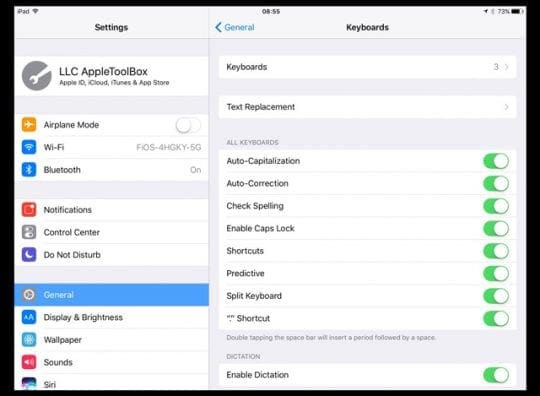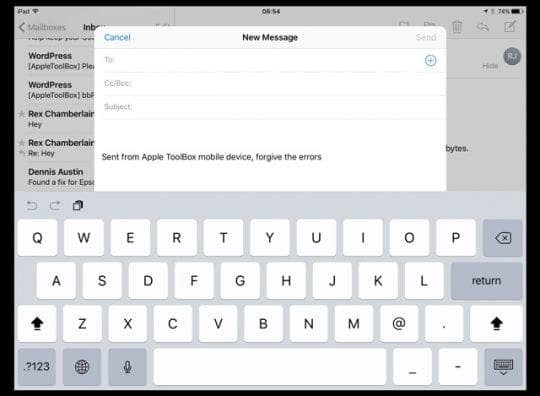CAPS LOCK is sometimes necessary. If you want to use caps lock on an iPhone, iPad, or iPod Touch, here is how to type in caps lock on the iPhone, iPad or iPod touch keyboard.

Contents
Update Keyboard Settings
First, make sure your keyboard is set to enable Caps Lock mode. Go to Settings > General > Keyboard and toggle ON Enable Caps Lock. Caps lock is usually enabled by default. But if you want to disable it for any reason, follow these same steps and toggle it off.

Keystrokes to Enable Caps Lock Mode
- Turn on CAPS LOCK by double-tapping the shift key (iPhone and iPod touch)
- The Shift key turns gray, white, or blue (iOS version dependent) when you enable CAPS LOCK.
- Turn on CAPS LOCK by double-tapping the shift key or by tapping the two shift keys simultaneously (iPad)
- The Shift key turns gray, white, or blue (iOS version dependent) when you enable CAPS LOCK.
You may have to try it a couple times to get your double-tap speed right.
All letters you type will be caps until you turn it off. Tap once on the shift key to disable CAPS LOCK.

Show LowerCase Keyboard
If you’re only seeing uppercase letters with your on-screen keyboard, when you’re typing uppercase and lowercase words, there’s a way to correct that. However, showing the Lowercase Keys may impact how the shift key switches between uppercase and lowercase letters.
To show the Lowercase Keyboard
- Go to Settings > General > Accessibility > Keyboard
- Toggle ON Show Lowercase Keys
Additional Keyboard Options
In your accessibility keyboard settings, there are also three additional options: Key Repeat, Sticky Keys, and Slow Keys. These settings help people with motor impairments better control their typing for things like unintentional inputs and keystrokes.
Three Accessibility Keyboard Settings
- Key Repeat–prevents characters from being entered multiple times with a single key press
- Sticky Keys–lets you set modifier keys, particularly useful for setting key combinations normally requiring two hands. Sticky keys hold down modifier keys for you while you type other keys
- Slow Keys–adjusts the duration between each key press and when it’s activated
Related:
